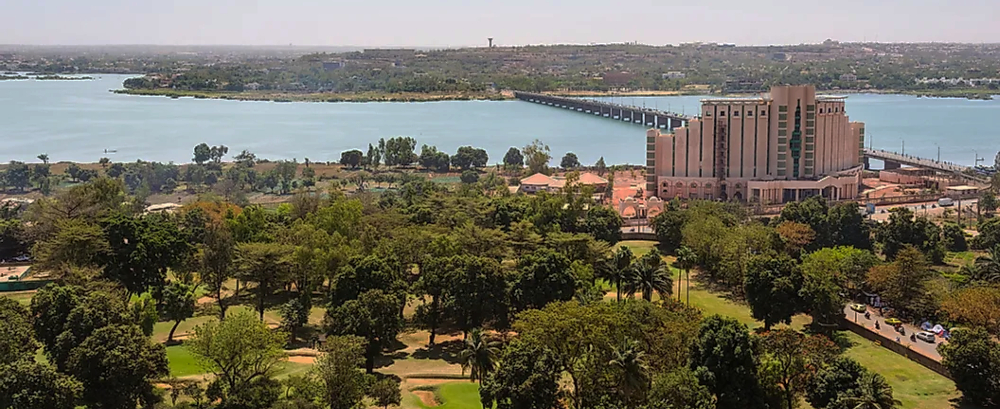
Guinea-Bissau
April 13, 2025
Mauritania
April 13, 2025Mali, a landlocked country in West Africa, is rich in mineral resources, and its mining sector plays a significant role in the country’s economy. The country is especially known for its gold production, but it also has other valuable minerals. Here’s an overview of the key mineral resources in Mali:
Key Mineral Resources
Gold:
Overview: Gold is the most important mineral resource in Mali and the driving force behind its mining industry. Mali is one of Africa’s top gold producers, and the sector is a major contributor to the country’s GDP and export revenues.
Major Gold Mines: Notable gold mines in Mali include the Morila mine, Sadiola mine, Loulo-Gounkoto complex, and Fekola mine. These mines are operated by international mining companies such as Barrick Gold, AngloGold Ashanti, and B2Gold.
Reserves: Mali has substantial gold reserves, and ongoing exploration activities suggest that the country will continue to be a major gold producer for many years.
Phosphates:
Overview: Mali has significant phosphate deposits, particularly in the Tilemsi Valley. Phosphate is a crucial mineral for agriculture as it is used to produce fertilizers.
Reserves: The phosphate reserves in Mali are considerable, with potential for development to support both domestic agriculture and export markets.
Uranium:
Overview: Uranium deposits have been identified in Mali, particularly in the Kidal and Gao regions in the northern part of the country. However, uranium mining is not yet fully developed.
Reserves: The uranium reserves in Mali are still being explored, with the potential for future development.
Bauxite:
Overview: Mali has bauxite deposits, especially in the Kayes region. Bauxite is the primary ore of aluminum, making it an important resource for the global aluminum industry.
Reserves: The bauxite reserves in Mali are promising, with potential for future exploration and development.
Iron Ore:
Overview: Iron ore deposits are found in Mali, particularly in the Bale and Kita regions. Iron ore is an essential resource for steel production.
Reserves: The iron ore reserves in Mali are significant, but the sector is not as developed as gold mining. There is potential for future exploration and development.
Manganese:
Overview: Mali has manganese deposits, particularly in the region of Ansongo. Manganese is an important industrial metal used in steel production.
Reserves: The manganese reserves in Mali are substantial, with potential for further exploration and development.
Limestone:
Overview: Limestone is abundant in Mali and is used primarily in the construction industry and for cement production.
Reserves: The limestone reserves in Mali are extensive, supporting local construction needs and cement production.
Lithium:
Overview: Lithium deposits have been identified in Mali, particularly in the Bougouni and Yanfolila regions. Lithium is a key component in battery technology, particularly for electric vehicles and renewable energy storage.
Reserves: The lithium reserves in Mali are still under exploration, but they hold significant potential for future development.
Salt:
Overview: Mali has historically been known for its salt production, particularly in the northern regions around Taoudenni. Salt has been an important commodity for trade for centuries.
Reserves: The salt reserves in Mali are adequate to support local demand and some export.
Investment and Extraction Situation
- Gold Mining Dominance: Gold mining is the backbone of Mali’s mineral sector. The country has attracted substantial foreign investment in this area, leading to the development of several large-scale gold mines. The government continues to promote gold exploration and mining to boost economic growth.
- Emerging Sectors: While gold dominates the mining landscape, other minerals such as bauxite, phosphates, and lithium are gaining attention. The government is encouraging investment in these sectors to diversify the mining industry.
- Artisanal and Small-Scale Mining (ASM): Artisanal and small-scale mining (ASM) is widespread in Mali, particularly in gold mining. While ASM plays a crucial role in local economies, it faces challenges such as lack of formalization, environmental degradation, and safety concerns. The government is working to regulate and formalize these activities to improve sustainability and productivity.
- Environmental and Social Impact: Mining activities in Mali must balance economic benefits with environmental and social impacts. Issues such as land degradation, water pollution, and community displacement have led to calls for more sustainable mining practices and stronger community engagement.
- Infrastructure Challenges: Infrastructure development, such as transportation and energy supply, is crucial for the efficient extraction and export of mineral resources. The government is focused on improving infrastructure to support the growth of the mining sector.


